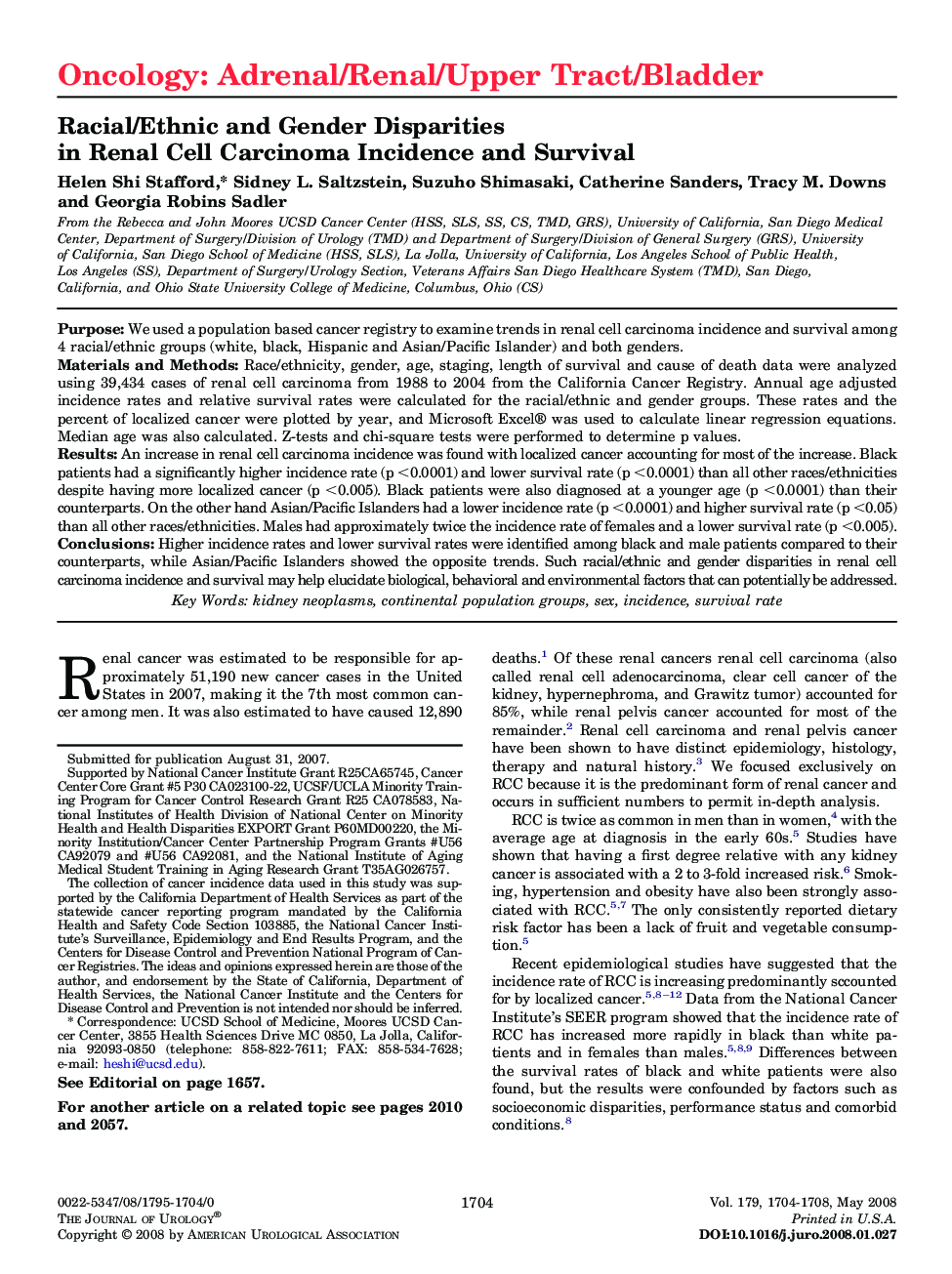| Article ID | Journal | Published Year | Pages | File Type |
|---|---|---|---|---|
| 3877452 | The Journal of Urology | 2008 | 5 Pages |
PurposeWe used a population based cancer registry to examine trends in renal cell carcinoma incidence and survival among 4 racial/ethnic groups (white, black, Hispanic and Asian/Pacific Islander) and both genders.Materials and MethodsRace/ethnicity, gender, age, staging, length of survival and cause of death data were analyzed using 39,434 cases of renal cell carcinoma from 1988 to 2004 from the California Cancer Registry. Annual age adjusted incidence rates and relative survival rates were calculated for the racial/ethnic and gender groups. These rates and the percent of localized cancer were plotted by year, and Microsoft Excel® was used to calculate linear regression equations. Median age was also calculated. Z-tests and chi-square tests were performed to determine p values.ResultsAn increase in renal cell carcinoma incidence was found with localized cancer accounting for most of the increase. Black patients had a significantly higher incidence rate (p <0.0001) and lower survival rate (p <0.0001) than all other races/ethnicities despite having more localized cancer (p <0.005). Black patients were also diagnosed at a younger age (p <0.0001) than their counterparts. On the other hand Asian/Pacific Islanders had a lower incidence rate (p <0.0001) and higher survival rate (p <0.05) than all other races/ethnicities. Males had approximately twice the incidence rate of females and a lower survival rate (p <0.005).ConclusionsHigher incidence rates and lower survival rates were identified among black and male patients compared to their counterparts, while Asian/Pacific Islanders showed the opposite trends. Such racial/ethnic and gender disparities in renal cell carcinoma incidence and survival may help elucidate biological, behavioral and environmental factors that can potentially be addressed.
